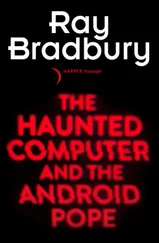After the Esquire article came out in 1971, Draper got a message through the phreak underground that two young fellows front Silicon Valley wanted to meet him. Crunch knew how to put the right electronic components together to make a bluebox. Steve Wozniak and Steve Jobs were interested in building their own blueboxes and maybe making a few dollars by selling them to students. Ever the advocate of a free exchange of technical information, Crunch told the two would-be entrepreneurs the technical details they were seeking. Shortly thereafter, the two Steves were holding “bluebox parties” in Berkeley dormitories and selling their elegantly home-built blueboxes for $60 apiece.
In 1974, Cap’n Crunch was busted twice. The first time landed him in a Federal penitentiary in Allentown, Pennsylvania, for six months. His second conviction for wire fraud landed him for several years in Lompoc, another Federal pen, located in California. It was in Lompoc that a Mafia-connected inmate tried to bribe John to divulge the secrets of bluebox construction, then, failing that, to extort them from him. Draper refused to divulge what he knew, and the other inmate broke Draper’s back—hence his ongoing interest in chiropractic exercises. While serving his second term he became eligible for the prison’s work-furlough program, which enabled him to learn programming and try to find programming jobs.
Draper and Wozniak continued their friendship, although the Cap’n’s relationship with Jobs was not as close. When Apple was barely out of the garage stage of its operations, Draper became one of its early employees. One of his jobs was to design a telephone device for the Apple. The telephone board Draper designed had very sophisticated properties—too sophisticated for Jobs’s tastes, because Draper had included features that phone phreaks might find very useful. They were no longer having fun and making a few extra bucks selling blueboxes to undergraduates. They were trying to build a legitimate company. Draper was fired. But not before he used the prototype phone board for one last, massive prank.
Draper was looking for WATS extender numbers—codes that allowed people in a particular area to gain access to free long-distance lines for major companies. Phone phreaks like to use these numbers to help them set up some of their pranks. The codes were four-digit numbers, which meant that he would have to dial up to 10,000 numbers if he were to find these codes by brute force. But Draper wired up an early Apple computer to his prototype phone board and programmed it to dial 5000 calls a night and automatically record which attempts led to legitimate WATS connections. The city of Mountain View, California, where Draper was living at the time, has determined that Draper was responsible for more than 50 percent of the calls originating from that city during the period his experiment was in operation.
Draper had dabbled in programming for years—after all, phreaking is a way of programming the communication network—but it wasn’t until he was on a work-furlough leave from his second prison term that he started to seriously teach himself Forth. Forth is a peculiar programming language in that it uses “grammatical” structures different from those of other languages. Because Forth consists of programmer-defined “words” that can be combined into customized programs, it enables programmers to work in a highly individual manner. Because of the fanatic devotion that some programmers tend to develop for Forth, one of the clichés in the software industry is that “Forth isn’t a language—it’s a religion.”
Because of his self-taught, freewheeling style, John's method of programming had several advantages and disadvantages when it came to the world of microcomputer software. While he was at Apple, and afterward, he developed a reputation for writing very concise code, which meant that he could produce an applications program—like a word processor, for example—that could fit into the limited memory of one of the early personal computers. He could also work very fast and accomplish a great deal during prolonged programming binges that sometimes took several days. His style was also vulnerable to criticism on some counts, however. Instead of revising his whole system to fix an error, he might create a “patch”—additional code that doesn’t eliminate the problematic feature of the program but rather bypasses certain annoying results.
In the late ’70s, John decided to design a word-processing program for microcomputers. Text editing and word processing were already catching on, but such programs then in use in offices were too large and cumbersome to shoehorn into an Apple. So John created EasyWriter. But by this time, he was persona non grata around Apple, and even though he maintained his friendship with Wozniak, his program was rejected by the corporation. Eventually, in 1978, Apple decided to support a word-processing package called Apple Writer created by that other eccentric character, Paul Lutus.
After Apple turned down EasyWriter, Draper found a partner, Matthew McIntosh, who was able to handle his mercurial mood changes and bizarre work habits. He and McIntosh set up a booth at an early West Coast Computer Faire. and when Adam Osborne came around, they asked him how they might go about selling their new EasyWriter package. Osborne was a well-known author and computer-book publisher at the time—although he had yet to start the innovative and ill-fated Osborne Computer Company—and they were eager to get advice from someone of his caliber. Osborne suggested that they visit another booth where a young fellow was promoting a primitive database manager and whose start-up software publishing company was called Information Unlimited Software. Draper and McIntosh took Osborne’s advice and went to the IUS booth, where they found a transplanted midwesterner in his early twenties, an aggressive and confident entrepreneur by the name of Bill Baker.
From the moment Draper first talked to Baker about EasyWriter, the destiny of Cap’n Software became more of an entrepreneur’s story than a programmer’s tale. That story will be continued in the next chapter. Suffice it to say now that when Baker happened onto one of the juiciest deals in microcomputer history, Draper became one of the first microcomputer programmers to make a lot of money in a very short time.
If you were casting a movie about the software industry, Bill Baker is the last person you would pick to play the man who made money for John Draper. John is anarchic, hirsute, and profane. Bill is conservative, button-down, and reverent. But between them, John Draper and Bill Baker pulled off one of the greatest deals of the software gold rush. Their story became the prototype for all the other brilliant-programmer-meets-marketing-genius scenarios of that era.
When they met at the Computer Faire, Draper was finishing a work-furlough program from his wire-fraud sentence and struggling to make ends meet as a programmer. Baker was a twenty-three-year-old entrepreneur, trying to sell enough software to fly home to Indianapolis. Several years after they met, Draper was driving a new Mercedes and spending much of his time on his Hawaiian ranch, while Baker was moving into a mansion next door to George Lucas's Skywalker Ranch in northern California.
Baker started Information Unlimited Software when he was a twenty-one-year-old business student in Indiana. At first, the business was nothing more than an official-looking letterhead that Bill used to obtain discounts on microcomputer hardware. Like so many others, including me, he had never thought of computers as anything more than a hobby. It took him a while to realize that they could offer him a full-time, and very lucrative, career.
Читать дальше










